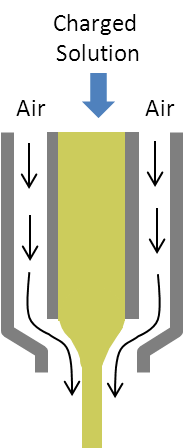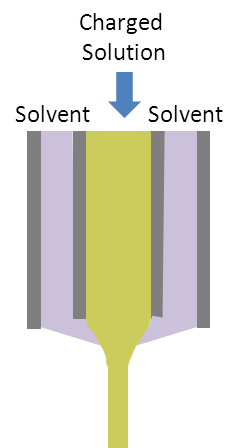▼ Reference
- Ahmad B, Stride E, Stoyanov S, Pelan E, Edirisinghe M. Electrospinning of Ethyl Cellulose Fibres with a Heated Needle and Heated Air Using a Co-axial Needle: a Comparison. Journal of Medical and Bioengineering 2012; 1: 1 Open Access
- Angammana C J, Jayaram S H. A Modified Electrospinning Method for Conductive and Insulating Materials. Proc. ESA Annual Meeting on Electrostatics 2010, Paper L3.
- Hao Q, Schossig J, Towolawi A, Xu K, Bayiha E, Mohanakanthan M, Savastano D, Jayaraman D, Zhang C, Lu P. High-Speed Electrospinning of Ethyl Cellulose Nanofibers via Taylor Cone Optimization. ACS Appl. Eng. Mater. 2024; 2: 2454. https://pubs.acs.org/doi/full/10.1021/acsaenm.4c00527 Open Access
- Peng M, Sun Q, Ma Q, Li P. Mesoporous silica fibers prepared by electroblowing of a poly(methyl methacrylate)/tetraethoxysilane mixture in N,N-dimethylformamide. Microporous and Mesoporous Materials 2008; 115: 562.
- UM IC, Fang D, Hsiao B S, Okamoto A, Chu B. Electro-spinning and electro-blowing of hyaluronic acid. Biomacromolecules 2004; 5: 1428.
- Wu Y H, Yang C, Li X Y, Zhu J Y, Yu D G. Medicated Nanofibers Fabricated Using NaCl Solutions as Shell Fluids in Modified Coaxial Electrospinning. Journal of Nanomaterials 2016; 2016: 8970213. Open Access
- Yu D G, Branford-White C, Bligh S W A, White K, Chatterton N P, Zhu L M. Improving polymer nanofiber quality using a modified co-axial electrospinning process. Macromolecular Rapid Communications 2011; 32(9-10): 744-750. Yu D G, Li X X, Ge J W, Ye P P, Wang X. The Influence of Sheath Solvent's Flow Rate on the Quality of Electrospun Ethyl Cellulose Nanofibers. Modeling and Numerical Simulation of Material Science 2013; 3: 1-5. Open Access
- Yu D G, Xu Y, Li Z, Du L P, Zhao B G, Wang X. Coaxial Electrospinning with Mixed Solvents: From Flat to Round Eudragit L100 Nanofibers for Better Colon-Targeted Sustained Drug Release Profiles. Journal of Nanomaterials 2014; 2014: 967295. Open Access
- Yu D G, Yu J H, Chen L, Williams G R, Wang X. Modified coaxial electrospinning for the preparation of high-quality ketoprofen-loaded cellulose acetate nanofibers. Carbohydrate Polymers 2012; 90: 1016.
- Zhou H, Shi Z, Wan X, Fang H, Yu D, Chen X, Liu P. The Relationships between Process Parameters and Polymeric Nanofibers Fabricated Using a Modified Coaxial Electrospinning. Nanomaterials 2019; 9: 843. Open Access
▼ Credit and Acknowledgement
Author
Wee-Eong TEO View profile
Email: weeeong@yahoo.com
 ElectrospinTech
ElectrospinTech




